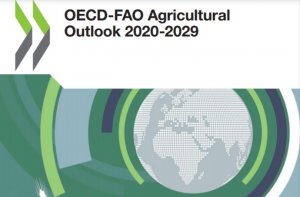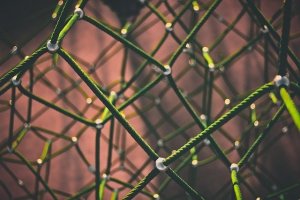This piece was published in the September 2020 edition of International Aquafeed
The OECD and the FAO jointly released mid-July 2020 their projections for 2029 (OECD-FAO Agricultural Outlook 2020-2029). Future growth in fish production is welcomed to feed a growing population with nutritious proteins. The aquaculture sector will be more than ever needed: the FAO expects that “intensification, expansion into new spaces and innovative technologies for land-based and offshore farms are expected to be the main drivers of growth”. The FAO adds that “demand for fish also depends on trends observed in the animal protein sector. For example, the current ASF situation in China's pork production is leading to increased fish consumption.” (OECD-FAO Agricultural Outlook 2020-2029).

Digitalisation will also accompany the developments of the food production system and fantastic progress has already been achieved to monitor the farms, check on water quality and feed consumption on a 24-hour basis. Increased efforts to ensure full traceability on operations is even more welcomed after the covid-19 outbreak, which revealed the weaknesses of supply chains, in all sectors of the economy, throughout the world.
Blockchain technologies are being studied as an efficient means to tackle friction points and blind spots. One of them that has been identified by MarinTrust, the third-party standard for marine ingredients, is the missing link between the fishmeal sector and the direct human consumption sector. Hoping that the blockchain technology can be the bridge to link activities that today remain in silos, MarinTrust has announced that they will include in the new version of their Chain of Custody standard a new clause related to traceability of products back to their origins. This new version of the MarinTrust Chain of Custody should be operational in October 2020.
 There are several blockchain projects in various agro-industries and many big companies in the food/feed industry are gearing up to make this happen, some more advanced than others. The Global Dialogue for Seafood Traceability (GDST) is an interesting initiative, facilitated by WWF and the Institute of Food Technologists (Global Food Traceability Centre). In the long-term, it is hoped that social and environmental sustainability of the food sector will benefit from these efforts. Local communities should see the value of the products they fish increase due to improved labelling and recognition. All stakeholders along the value chain should be able to benefit from these technologies, provided all of them understand the value of knowing why the data is recorded, what the purpose of it being recorded in an accurate and consistent way is. Currently, whole swathes of data are being recorded, but there remain inconsistencies. The change will need to be supported by a new cultural mindset.
There are several blockchain projects in various agro-industries and many big companies in the food/feed industry are gearing up to make this happen, some more advanced than others. The Global Dialogue for Seafood Traceability (GDST) is an interesting initiative, facilitated by WWF and the Institute of Food Technologists (Global Food Traceability Centre). In the long-term, it is hoped that social and environmental sustainability of the food sector will benefit from these efforts. Local communities should see the value of the products they fish increase due to improved labelling and recognition. All stakeholders along the value chain should be able to benefit from these technologies, provided all of them understand the value of knowing why the data is recorded, what the purpose of it being recorded in an accurate and consistent way is. Currently, whole swathes of data are being recorded, but there remain inconsistencies. The change will need to be supported by a new cultural mindset.
We know that an increasing use of by-products will depend upon the trust that is placed in them. According to the FAO, “by 2029, the proportion of total fish oil obtained from fish waste is projected to grow from 41% to 45%, while for fishmeal this proportion will increase from 24% to 28%.”(OECD-FAO Agricultural Outlook 2020-2029). . There is no doubt that strict guidelines and enforcement through certification programmes and regulations will contribute to driving this development.









